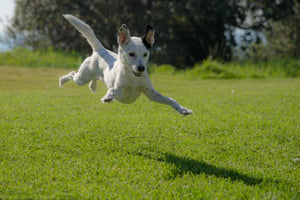Training your dog not to bark can be a difficult task but with patience and consistency, you can...
Complete Canine Training: How to Train Your Dog Easily and Effectively
Training your dog is essential for both you and your pup. Not only does it help you to create a bond with your pet, but it also teaches your dog obedience and manners. Complete canine training involves teaching your pet the basics, such as commands, and more advanced skills, such as agility and tricks. In this article, we'll discuss the importance of complete canine training, tips for success, and how to get started.
The Benefits of Complete Canine Training
Complete canine training is beneficial for both you and your pup. It helps to build a strong bond between you and your pet and also enables you to communicate more effectively with them. It also helps to prevent problem behaviors, such as barking and jumping, from developing. Additionally, complete canine training teaches your dog to obey commands, follow directions, and respect boundaries, making it easier to manage them in a variety of situations.
Complete canine training also helps to keep your pet safe. Teaching your dog basic commands, such as “sit” and “stay”, can help them to stay out of harm's way. Additionally, teaching them more advanced skills, such as agility and tricks, can help to keep them mentally stimulated and physically fit.
Tips for Successful Complete Canine Training
The key to successful complete canine training is consistency. Make sure to stick to the same commands, rewards, and punishments each time. Additionally, make sure to use positive reinforcement when training your pup. Positive reinforcement, such as treats and praise, is more effective than punishment, and it helps to build a strong bond between you and your pet.
It's also important to remain patient and consistent. Training your pup can take time, so don't expect them to learn everything overnight. Additionally, be sure to give your dog plenty of breaks and keep training sessions short and sweet. Finally, be sure to reward your pup for good behavior. This will reinforce the desired behavior and make them more likely to repeat it.
Getting Started with Complete Canine Training
Before beginning complete canine training, it's important to choose the right tools. You'll need a leash, treats, and toys. Additionally, you may want to invest in a clicker or a whistle, which can be used to help your pup understand commands. Once you have the necessary supplies, you're ready to get started.
Step 1: Start with the Basics
The first step in complete canine training is to teach your pup the basics. Start by teaching them basic commands, such as “sit”, “stay”, and “come”. Make sure to use positive reinforcement, such as treats and praise, when they obey the commands. Once they have mastered the basics, you can move on to more advanced skills.
Step 2: Teach Advanced Skills
Once your pup has mastered the basics, you can move on to teaching them more advanced skills, such as agility and tricks. Agility is a great way to keep your pup mentally and physically stimulated, and tricks can be fun for both you and your pup. When teaching your pup more advanced skills, it's important to take it slow and break the skills down into smaller, more manageable pieces.
Step 3: Practice, Practice, Practice
The key to successful complete canine training is practice. Make sure to practice the skills you've taught your pup regularly. This will help to reinforce the behaviors and ensure that your pup remembers them. Additionally, it's important to make sure that your pup is having fun. If your pup is getting bored or frustrated, take a break and try again later.
Conclusion
Complete canine training is essential for both you and your pup. Not only does it help to build a strong bond between you and your pet, but it also teaches them obedience and manners. Additionally, it helps to keep your pup safe and prevents problem behaviors from developing. To get started, make sure to choose the right tools, start with the basics, teach advanced skills, and practice regularly. With patience and consistency, you can easily and effectively train your pup.



